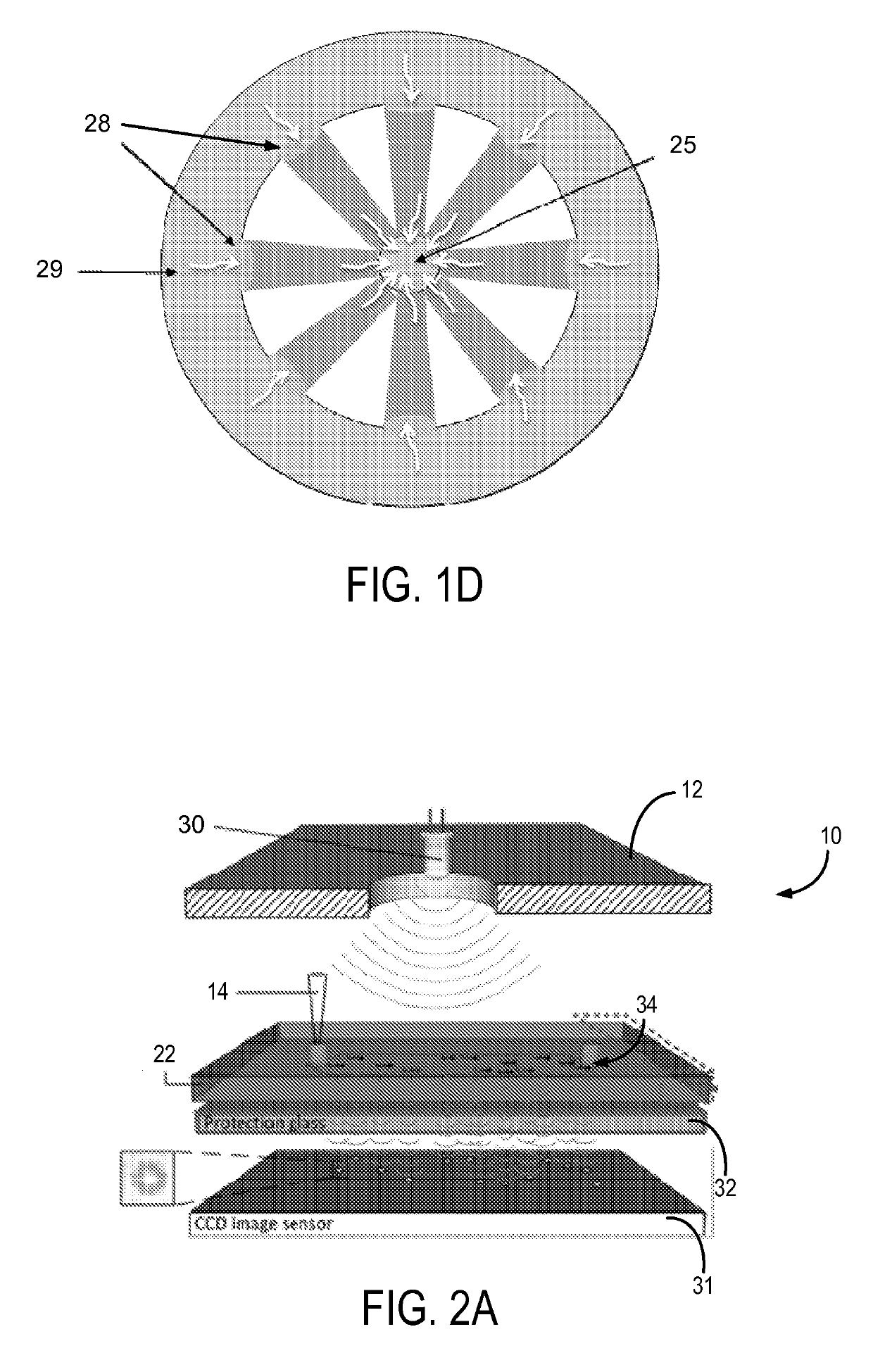System and method for sperm sorting
a sorting system and sperm technology, applied in the field of system and method for sorting, can solve the problems of compromising sperm quality, affecting the quality of sperm, and affecting the quality of sperm, and achieve the effect of high retrieval ra
- Summary
- Abstract
- Description
- Claims
- Application Information
AI Technical Summary
Benefits of technology
Problems solved by technology
Method used
Image
Examples
example
[0050
[0052]The poly (methyl methacrylate) (PMMA, 3 mm thick; McMaster Carr, Atlanta, Ga.) and double side adhesive (DSA, 120 μm thick, St. Paul, Minn.) were cut using a laser cutter (Versa Laser™, Scottsdale, Ariz.). The design for the chip was generated on Coral Draw4 and implemented onto USLE Engrave software for cutting. Primary components of the MMSS chip included one 3 mm PMMA cut to an area of 50 mm×30 mm (bottom chamber) and another cut to an area of 30 mm×30 mm (top chamber). A 0.6 mm injection point was also cut into the bottom PMMA sheet at a 5 mm distance from the chambers. Cylinders of 20 mm diameter were cut into both PMMA components. The bottom PMMA chamber was first attached to glass slide using DSA. Top PMMA chamber was aligned and attached with bottom chamber using DSA. The Nuclepore™ track-etched polycarbonate membrane filters (Whatman Ltd, 25 mm diameter, 3 μm, 5 μm, 8 μm) were sandwiched between two PMMA chambers during chip assembly. T...
PUM
| Property | Measurement | Unit |
|---|---|---|
| size | aaaaa | aaaaa |
| size | aaaaa | aaaaa |
| volume | aaaaa | aaaaa |
Abstract
Description
Claims
Application Information
 Login to View More
Login to View More - R&D
- Intellectual Property
- Life Sciences
- Materials
- Tech Scout
- Unparalleled Data Quality
- Higher Quality Content
- 60% Fewer Hallucinations
Browse by: Latest US Patents, China's latest patents, Technical Efficacy Thesaurus, Application Domain, Technology Topic, Popular Technical Reports.
© 2025 PatSnap. All rights reserved.Legal|Privacy policy|Modern Slavery Act Transparency Statement|Sitemap|About US| Contact US: help@patsnap.com



